
PREV ARTICLE
NEXT ARTICLE
FULL ISSUE
PREV FULL ISSUE
MORE FAMOUS NAMES ON OBSOLETE BANKNOTES
Last week Chris Neuzil inquired about why the names of famous national figures often appear as the payee on obsolete banknotes of the
19th century. -Editor
Dave Bowers writes: In the early days, notes of state-chartered banks had a space for the name of the payee, or the first person receiving an issued note, to be filled in with ink. This really had no meaning, took up a teller’s time, and instead the names of famous people, often with a first initial then a surname, were PRINTED on the notes. These famous people had no connection of any kind with the banks.
Chris' notes were listed as payable to "H. Clay," "H. Gates," and "Thos McDonough". Dave provided
images of three other examples of famous payees, all on notes of New Hampshire. Thanks! -Editor
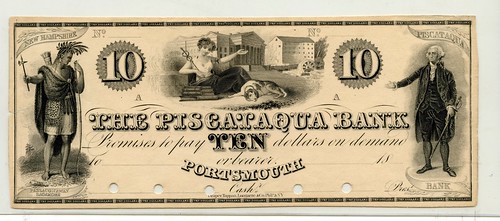
blank space for payee 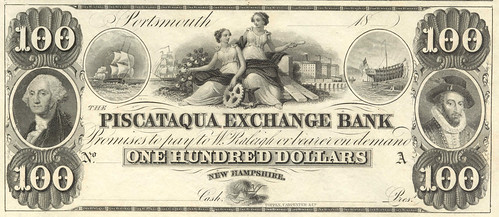
W. Raleigh (printed) 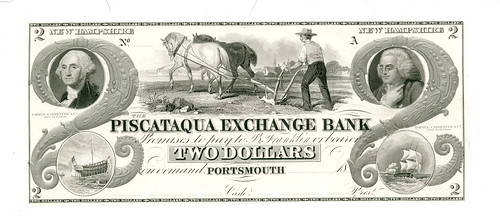
B. Franklin (printed) David Gladfelter concurs. He writes: Chris Neuzil’s theory, that the reason for famous persons being named as payees on obsolete bank notes and scrip was to facilitate acceptance of the notes in commerce, is exactly right. Because the notes were made payable to an individual “or bearer,” they were legally negotiable as bearer paper, regardless of whether a specific payee was named on it or had endorsed the note. Usually the named payees were bank officials, or locally known political or military persons. Their names on the notes were intended to generate public confidence that the notes were good, but they had no legal significance. And many times that confidence was misplaced. Here’s an example of a scrip note issued by a New Jersey iron works having the name of H(enry) Clay as the payee. Although the note was printed with an 1840 date, it could not have been issued prior to 1858, since the signer, R(iley) A. Brick, did not come of legal age until then. Clay, a well-known national political figure and Whig presidential candidate in 1844, had died in 1852. A more unusual obsolete note is one signed fictitiously. Here’s one dated 1837 issued by a country store keeper in New Jersey, but purportedly signed by “Napoleon Bounaparte.” The real Napoleon spelled his name without the “u” and had died in 1821, 16 years prior. But Napoleon’s brother Joseph then lived in Bordentown, a few miles from Jobstown. Joseph was well known and well liked in the area. 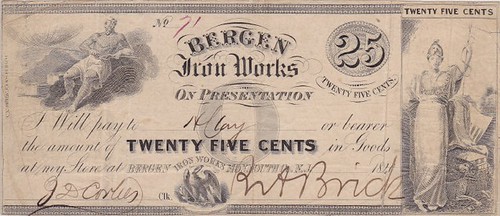
Bergen Iron Works: Payable to H. Clay 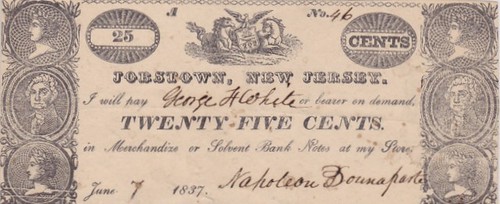
Jobstown, NJ: Napoleon Bounaparte To read the earlier E-Sylum article, see:
Wayne Homren, Editor The Numismatic Bibliomania Society is a non-profit organization promoting numismatic literature. See our web site at coinbooks.org. To submit items for publication in The E-Sylum, write to the Editor at this address: whomren@gmail.com To subscribe go to: https://my.binhost.com/lists/listinfo/esylum All Rights Reserved. NBS Home Page Contact the NBS webmaster 
|